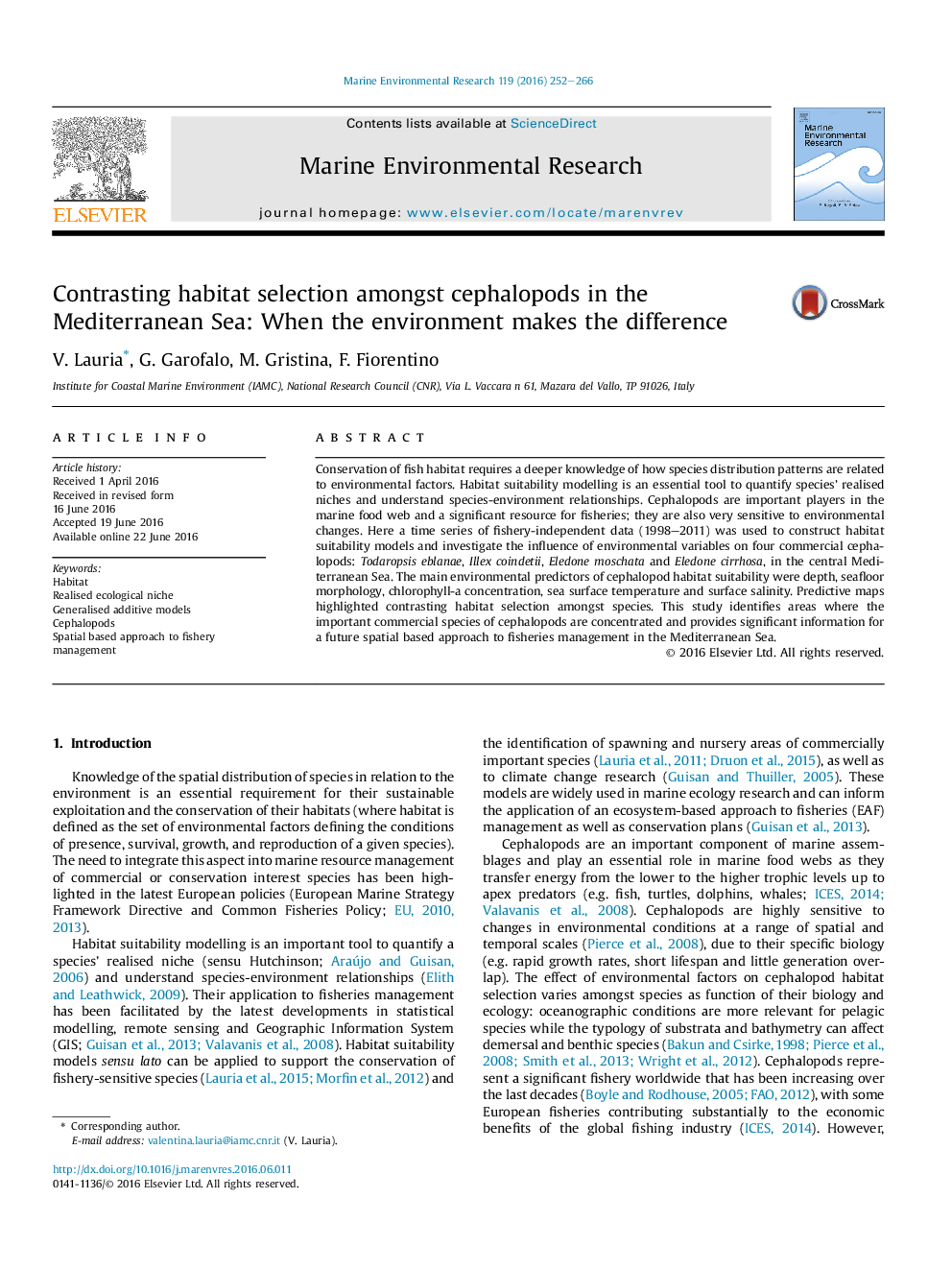| Article ID | Journal | Published Year | Pages | File Type |
|---|---|---|---|---|
| 6387596 | Marine Environmental Research | 2016 | 15 Pages |
Abstract
Conservation of fish habitat requires a deeper knowledge of how species distribution patterns are related to environmental factors. Habitat suitability modelling is an essential tool to quantify species' realised niches and understand species-environment relationships. Cephalopods are important players in the marine food web and a significant resource for fisheries; they are also very sensitive to environmental changes. Here a time series of fishery-independent data (1998-2011) was used to construct habitat suitability models and investigate the influence of environmental variables on four commercial cephalopods: Todaropsis eblanae, Illex coindetii, Eledone moschata and Eledone cirrhosa, in the central Mediterranean Sea. The main environmental predictors of cephalopod habitat suitability were depth, seafloor morphology, chlorophyll-a concentration, sea surface temperature and surface salinity. Predictive maps highlighted contrasting habitat selection amongst species. This study identifies areas where the important commercial species of cephalopods are concentrated and provides significant information for a future spatial based approach to fisheries management in the Mediterranean Sea.
Related Topics
Physical Sciences and Engineering
Earth and Planetary Sciences
Oceanography
Authors
V. Lauria, G. Garofalo, M. Gristina, F. Fiorentino,
